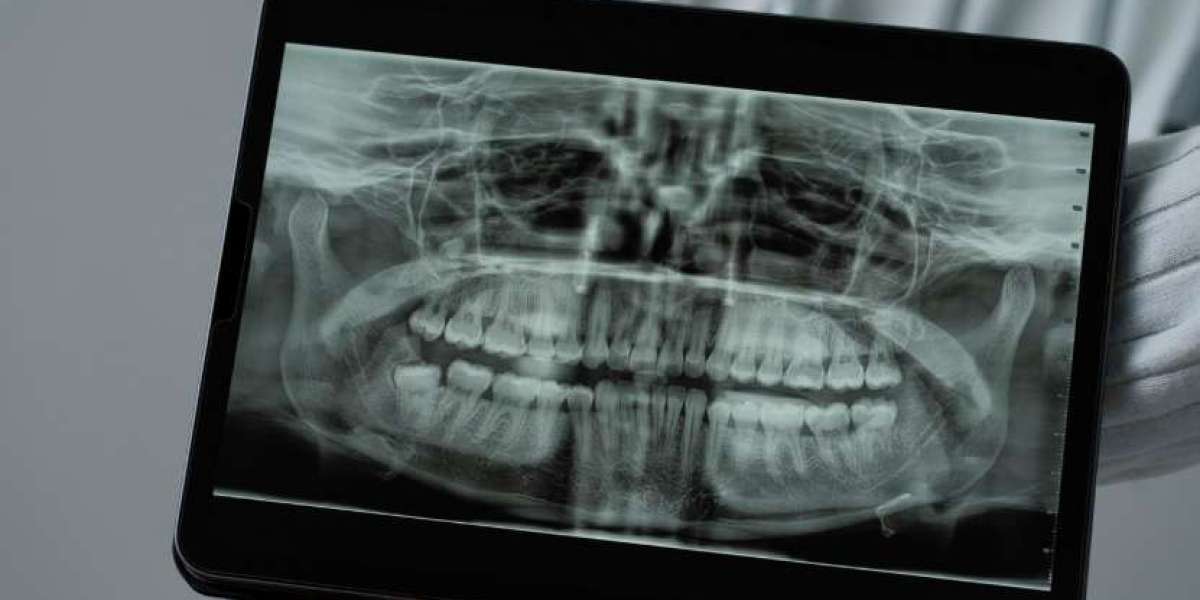Dental radiology services have come a long way in improving how dental professionals diagnose, treat, and monitor oral health. One of the most valuable tools in this field is the full mouth X-ray, a comprehensive set of radiographic images that helps detect problems not visible during a standard dental exam. But when exactly are these X-rays necessary—and how do they fit into modern dentistry?
What Are Full Mouth X-Rays?
Full mouth X-rays, also known as a Full Mouth Series (FMX), consist of a combination of periapical and bitewing radiographs. These detailed images cover all the teeth, roots, jawbones, and surrounding tissues. Unlike single or localized X-rays, a full mouth series gives your dentist a complete overview of your oral health in one sitting.
Modern dental radiology services use digital X-ray technology, which significantly reduces radiation exposure while offering high-resolution imaging that can be instantly viewed and analyzed.
When Are Full Mouth X-Rays Necessary?
1. First Dental Visit or New Patient Exam
For patients visiting a new dentist or receiving a comprehensive oral health evaluation for the first time, a full mouth X-ray provides baseline data. This helps the dentist detect underlying issues and track changes over time.
2. Severe Dental Decay or Gum Disease
When a patient presents symptoms of advanced tooth decay or periodontal disease, full mouth X-rays are crucial in assessing the extent of the problem. The images can reveal bone loss, abscesses, and hidden infections.
3. Pre-Orthodontic or Implant Evaluation
Before starting orthodontic treatment or dental implant placement, dentists may recommend a full mouth X-ray to evaluate bone structure, root alignment, and any abnormalities that could affect treatment.
4. Monitoring Long-Term Oral Health Conditions
Patients with chronic dental conditions such as bruxism, TMJ disorders, or recurring infections may need full mouth imaging periodically to monitor progression and effectiveness of ongoing treatments.
5. Trauma or Injury Assessment
If a patient has suffered facial trauma due to an accident, full mouth X-rays help assess damage to teeth, roots, and surrounding bone structures that may not be visible externally.
Advantages of Full Mouth X-Rays in Modern Dentistry
Modern dental radiology services make full mouth X-rays safer and more efficient than ever. Some benefits include:
Early Detection: Identifies problems before they become painful or costly to treat.
Comprehensive View: Offers a full picture of the patient’s oral health in a single session.
Digital Accuracy: Clearer images lead to more accurate diagnoses and faster treatment decisions.
Minimal Radiation Exposure: Digital systems significantly reduce patient risk.
Are Full Mouth X-Rays Safe?
Yes. With digital imaging, the amount of radiation involved is extremely low—often lower than the natural background radiation we’re exposed to daily. Still, dental professionals only recommend full mouth X-rays when clinically necessary, especially for pregnant women and children.
Conclusion
Full mouth X-rays are a powerful part of modern dental radiology services, offering essential insights that help prevent, diagnose, and treat a wide range of dental conditions. Whether you’re starting care with a new dentist or managing ongoing oral health issues, a full mouth series can provide the clarity needed for effective, personalized treatment.
If you haven’t had a full mouth X-ray recently and are experiencing discomfort or starting a new treatment plan, consult your dentist to see if it’s time for an updated set.



